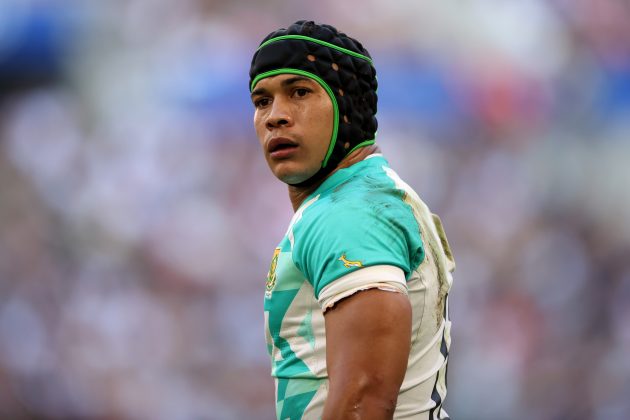Plenty of players choose to wear a scrum cap for various reasons
Scrum caps are a personal choice but many players do opt to wear them on their heads when they are playing rugby.
Why do they wear scrum caps? Well, firstly to be clear and counter one myth. Scrum caps have a demonstrative effect on reducing the risk of lacerations, cauliflower ears and other soft-tissue injuries. However, there is no evidence that any headgear can protect against sub-concussive and concussive blows.
Read more: What is a cauliflower ear?
One of the main reasons a player might wear a scrum cap is if they are, funnily enough, packing down in the scrum. Particularly if they are in the tight five forwards – the front or second row – their ears will be rubbing against either their opponents or their own front row if you are a lock.
Scrum caps were originally designed to forwards but they are by no means limited to the players up front. Some high profile backs have had great success by wearing a scrum cap. Think Cheslin Kolbe, Kurt-Lee Arendse, Jack Nowell, Matt Giteau and France’s Gabin Villiere plus Welsh duo Leigh Halfpenny and Jonathan Davies are just a few that spring to mind.
Padded headgear is primarily used to protect from cuts and minor lacerations that you can pick up in innocuous collisions around the field.
The official view comes from Professor Stephen Mellalieu, of the Cardiff School of Sport, who told Wales Online: “Generally head guards are worn to prevent lacerations, cuts, and tears. Some people can get severed ears so these caps go some way in protecting them.
“People can also wear head guards to prevent cauliflower ears and people tape up their ears to prevent abrasions.
“If you are a second row and scrummaging your ears can get worn down so that’s why they tend to wear scrum caps.”
Download the digital edition of Rugby World straight to your tablet or subscribe to the print edition to get the magazine delivered to your door.
Follow Rugby World on Facebook, Instagram and Twitter/X.





